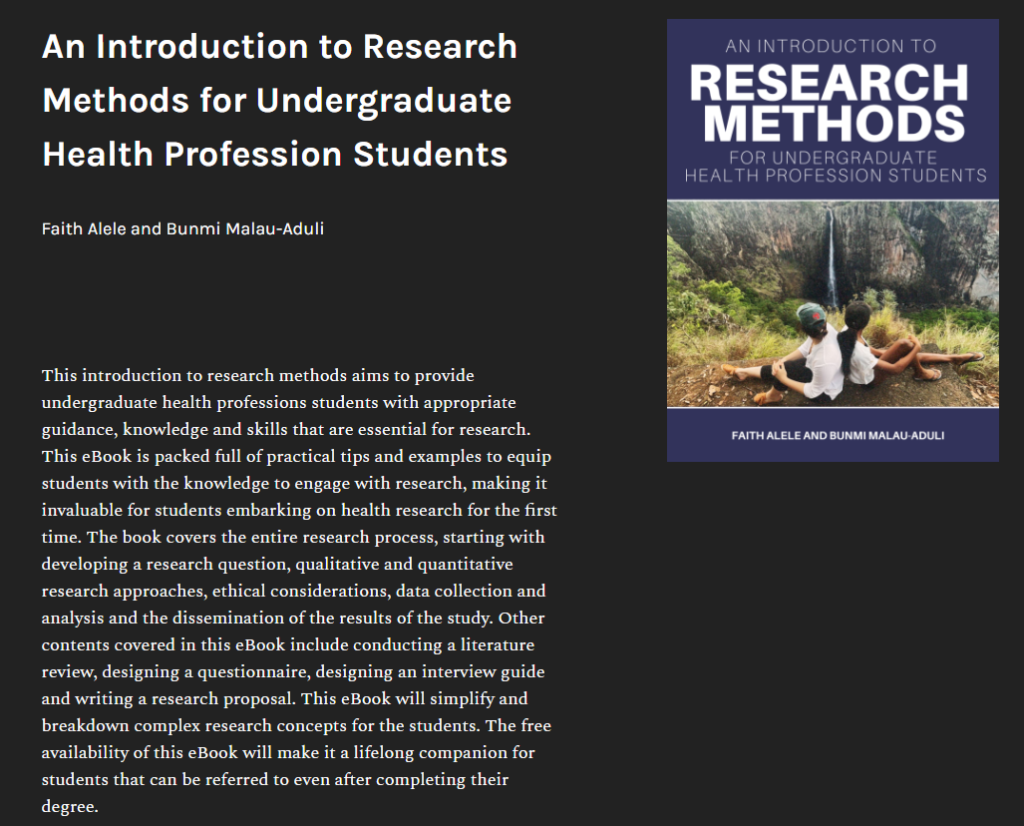9.3 Research Methods – Mixed Methods
Mixed Methods

For this topic on mixed methods, you will use the text “An Introduction to Research Methods for Undergraduate Health Profession Students“. This content is focused on Chapter 5 – Mixed Methods. Each of the reading sections below is linked to the relevant chapter of this text for you to read and complete related activities.
Topic Activities
Reading
- 📖READ Part 5 – Introduction to Mixed Methods, which describes a scenario related to everyday life. It highlights the importance of mixed methods research.
- It is important at this stage to understand the difference between using Mixed Methods versus a Multi-methods
💭HINT: Triangulation of data
Reading
2. 📖READ chapter 5.1 Purpose of Mixed Methods
Activity 1️⃣⏰30 Minutes
Reading
3. 📖READ chapter 5.2 Rationale for Mixed Methods
Activity 2️⃣⏰5 Minutes
Reading
4. 📖READ chapter 5.3 Key Attributes of Mixed Methods Research
Activity 3️⃣⏰30 Minutes
Reading
5. 📖READ chapter 5.4 Philosophical Underpinnings to Mixed Methods Research
- Familiarize yourself with the philosophy underpinning mixed methods research. Both pragmatism and realism are more interested in real world problems and real world solutions to things, rather than some sort of abstraction. Pragmatism is a sort of “take things as they come” approach, whereas realism leans very slightly towards a more theoretical approach.
Difference between Pragmatism and Realism
- Realism is about the beliefs you hold. Unrealistic beliefs can be excessively optimistic or excessively pessimistic.
- Pragmatism is about what you do and why you do it. Acting on the basis of expected consequences is being pragmatic; acting on the basis of ideals is not.
Pragmatism is the best philosophical foundation for mixed methods research.
Activity 4️⃣⏰30 Minutes
Reading
6. 📖READ chapter 5.5 Mixed Methods Study Designs
- Convergent design
- Exploratory sequential design
- Explanatory sequential design
Activity 5️⃣⏰30 Minutes
Reading
7. 📖READ chapter 5.6 Triangulation of data
Data integration occurs at the design, methods, interpretation and reporting level. A good example is presented in this chapter about the impact of an educational program.
Activity 6️⃣⏰30 Minutes
Reading
8. 📖READ chapter 5.7 Conclusion
It highlights balancing the quantitative and qualitative data appropriately for the research question and goals.
This is a research design that combines both quantitative and qualitative research methods in a single study to gain a more comprehensive understanding of a phenomenon.
Multi-methods studies can use either multiple qualitative or multiple quantitative methods.
